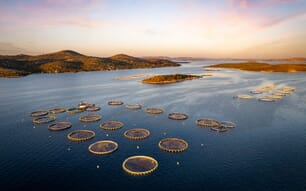Until recently, all attempts to reliably culture pearls from the queen conch were unsuccessful. Through a novel seeding technique developed at Harbor Branch, researchers have already achieved proof-of-concept production of more than 200 queen conch cultured pearls, and Rose Pearl, LLC was formed to serve as a business partner to introduce a new gem to industry.
“Together with our partner, Rose Pearl, we have been able to bring our concept to the SURCAG Phase III stage,” said Megan Davis, Ph.D., co-inventor, principal investigator and associate executive director at Harbor Branch. “SURCAG will help us to leverage the techniques we have developed to create the world’s first queen conch culture pearl production and marketing business headquartered in Florida.”
Rose Pearl was established in August 2010 and serves as FAU’s industry partner and licensee of this technology. As a stipulation of the SURCAG Phase III, Rose Pearl will match the $65,000 awarded to FAU to launch the company, and is working with the University to build production capacity and infrastructure, begin test-marketing and establish wholesale distribution channels.
“This is a win-win situation for Florida Atlantic University, the state of Florida and our company,” said Kerri Malett, president of Rose Pearl. “FAU will benefit through payment of royalties, the state will profit through a sustainable, Florida-based industry which will supply export and retail segments and create skilled jobs, and Rose Pearl will join the ranks of ‘green’ businesses and serve as an icon for Florida’s research coast, helping to attract future investments.”
Ms Davis and co-inventor Héctor Acosta-Salmón, Ph.D. have been able to produce beaded (nucleated) and non-beaded cultured pearls from the queen conch using two different seeding techniques to induce pearl formation. One is a modification of the conventional technique used to produce cultured pearls in freshwater mussels, and the other is a modification of the conventional technique used in marine pearl oysters.
Previous efforts to culture queen conch pearls were unsuccessful, most likely due to the animal’s sensitivity to traditional pearl seeding techniques and its complex shell. The spiral shape of the shell makes it virtually impossible to reach the gonad, one of the pearl-forming portions in pearl oysters, without endangering the animal’s life.
“It is especially important to note that the technique we have developed does not require sacrificing the conch in the process,” said Mr Acosta-Salmón. “Not only does our technique ensure 100 percent survival rate of the queen conch after seeding, it also produces another pearl after the first pearl is harvested. This makes the culturing process more efficient and environmentally sustainable for commercial application.”
Survival of the animal is critical because commercial fishing has depleted the once-abundant wild populations of queen conch, and they are now considered a commercially threatened species in Florida and throughout the Caribbean. FAU researchers and Rose Pearl plan to work closely with neighboring Caribbean countries to help ensure sustainability of their commercial fisheries management of the queen conch.
The size of the cultured pearls produced is controlled by the size of the bead and the culture time. Acosta-Salmón and Davis have experimented with culture times from six months to two years; longer culture times may produce larger pearls. The queen conch is farmed in aquaculture tanks, and the queen conch cultured pearls in the initial harvest were grown in an aquaculture facility at Harbor Branch. Queen conch achieve full size at about three years and have a life span of up to 40 years.
The queen conch is the largest molluscan gastropod of the six conch species found in the shallow seagrass beds of Florida, the Bahamas, Bermuda, the Caribbean Islands, and the northern coasts of Central and South America.
Grant For Novel Processing Of Queen Conch Pearls
US - Florida Atlantic Universitys Harbor Branch Oceanographic Institute has received a State University Research Commercialization Assistance Grant (SURCAG) from the 2010 Florida Legislature through the Florida Technology, Research and Scholarship Board to accelerate commercialization of a patent-pending technique to produce cultured pearls from the queen conch (Strombus gigas) and create a new, Florida-based industry.


